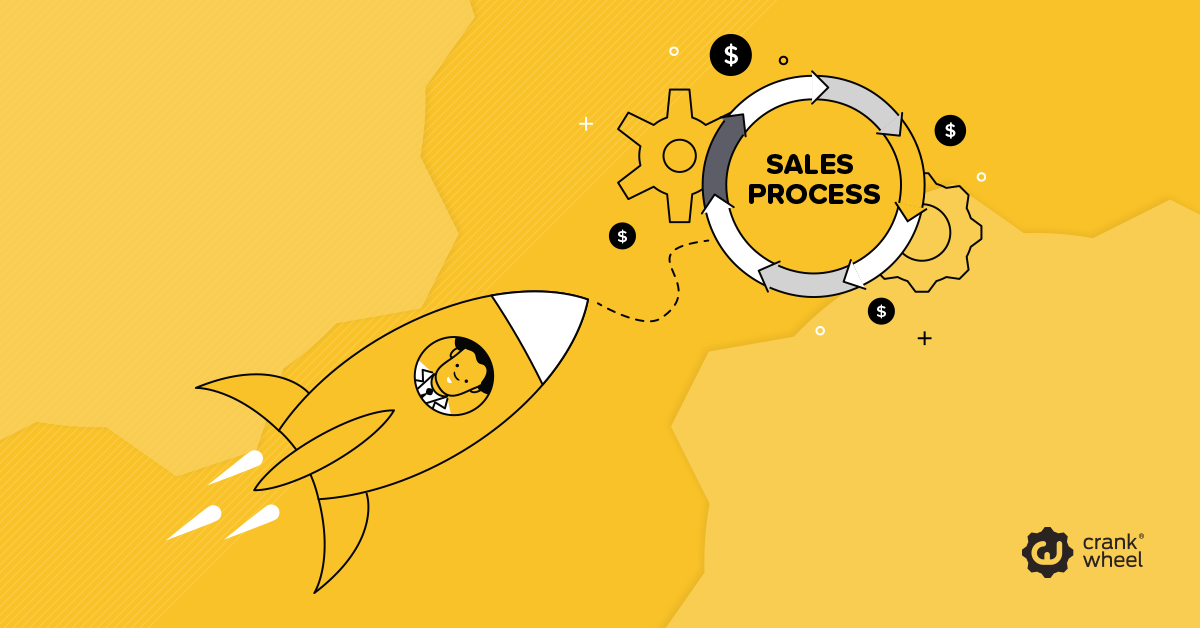How to create or improve the sales process, and why this is mission-critical?
Not every company has a sales process. Even those turning over millions, with teams of outbound and inbound sales agents, could be operating in the same way as a startup. No process, no structure.

- Sales without a process and structure isn’t repeatable and scalable.
- How do you onboard and teach new salespeople how things are done?
- How do you get the same results from across the whole team?
- How do you accelerate growth unless you know what works and what doesn’t?
Those are a few of the advantages a sales process provides a sales team, and therefore the whole company relying on that team to generate more revenue. According to CSO Insights research, creating and sticking to a sales process can improve performance by as much as 80%.
In this article, we look at what it means to have a sales process, why it’s mission-critical, and how to create one that works.
What is a sales process?
A sales process is a series of repeatable steps that teams need to make that get leads from entering the funnel to going ahead with a purchase. In a B2B sales environment, this usually means leads are generated through inbound or outbound activities, then moved through the various stages of the funnel, until a percentage of them say yes.
Successful sales processes allow for scalability. Processes should make it easy for new team members to join, learn how things work, and then achieve results similar to more experienced sales reps. Giving everyone a framework makes sales easier to achieve, and a structured working environment benefits everyone, including sales managers.
Why is a sales process mission-critical?
Sales processes are especially useful for inbound and outbound teams. Account managers and field sales teams need processes too, but those teams often operate on a more reactive basis. When it comes to teams that need clearer structure, the emphasis is on inbound and outbound teams.
Having a process is mission-critical because:
- It gives a sales team a clear process to follow, for every sales lead, from first contact to closing the deal.
- It ensures sales are easier to document, which means you can identify what’s working and what isn’t.
- Without a clear process, lead generation efforts are often wasted, because knowledge and even sales leads can soon disappear without documenting efforts.
- Training and onboarding new staff is easier when there’s a clear process and structure to sales operations.
- Whether inbound or outbound sales, the whole sales journey for potential customers runs more smoothly too, which increases the chances they will become clients.
How do you create a sales process?
Start with reviewing everything and anything you’ve got written down. Including any sales enablement materials, and other documentation.
Review the CRM. Does it contain the outlines of a process?
Chances are, you’ve got enough material to start creating a framework. For some companies, because this can be quite messy, complicated and time-consuming, it makes sense to bring an external consultant on board to deliver this as a complete project. Someone with sales experience, whether in training, or consultancy, or a Fractional VP of Sales.
Alternately, this is something a VP of Sales or Sales Manager can usually manage, alongside a co-founder. Work through everything you’ve got, and then start to fill in the gaps.
Interview members of the sales team to understand how they get results. This way, you can incorporate processes from high-performers into the workflows of everyone on the team. Once you’ve got all of the information in one place it should resemble a working document, and therefore process that everyone can follow.
What should the sales process look like?
Every sales team and company has a different approach and process, of course. Even two sales teams will operate differently, whether they’re inbound or outbound. It also depends on the ticket price/sales value of the products or services you are selling. Bigger ticket items take more time. And if you are dealing with more decision-makers, then those sales also take longer.
So this structure might not work completely for your company, but the overall outline should be similar for most companies:
- Prospect (outbound) for potential clients, or leads come inbound, through marketing and referrals.
- Research the company, before arranging a demo/call (even if they come in “hot” and want an instant demo: doing some quick research can make a huge difference).
- Qualify leads, usually on the first call/demo. Are they a suitable potential client? If yes, then proceed to the next stage. That is unless they are a warm inbound lead and your product/service can be sold on one call; in which case, you can attempt to close the deal at this stage.
- Send over more information, such as a proposal document, and arrange another call.
- Handle any objections, questions, and aim to close on the next call (adding further stages of course dependent on whether the sales cycle is longer for your company).
- Close the deal. Log it in the CRM. If they don’t want to go ahead, attempt to get feedback and use those learnings as best as possible.
- Once a sales lead is a new client: continue to nurture, support and up-sell as much as possible (account management).
CrankWheel: Cut your sales cycle in half with instant screen-sharing. Go from two or more sales calls to one: Become a one call close sales team.
